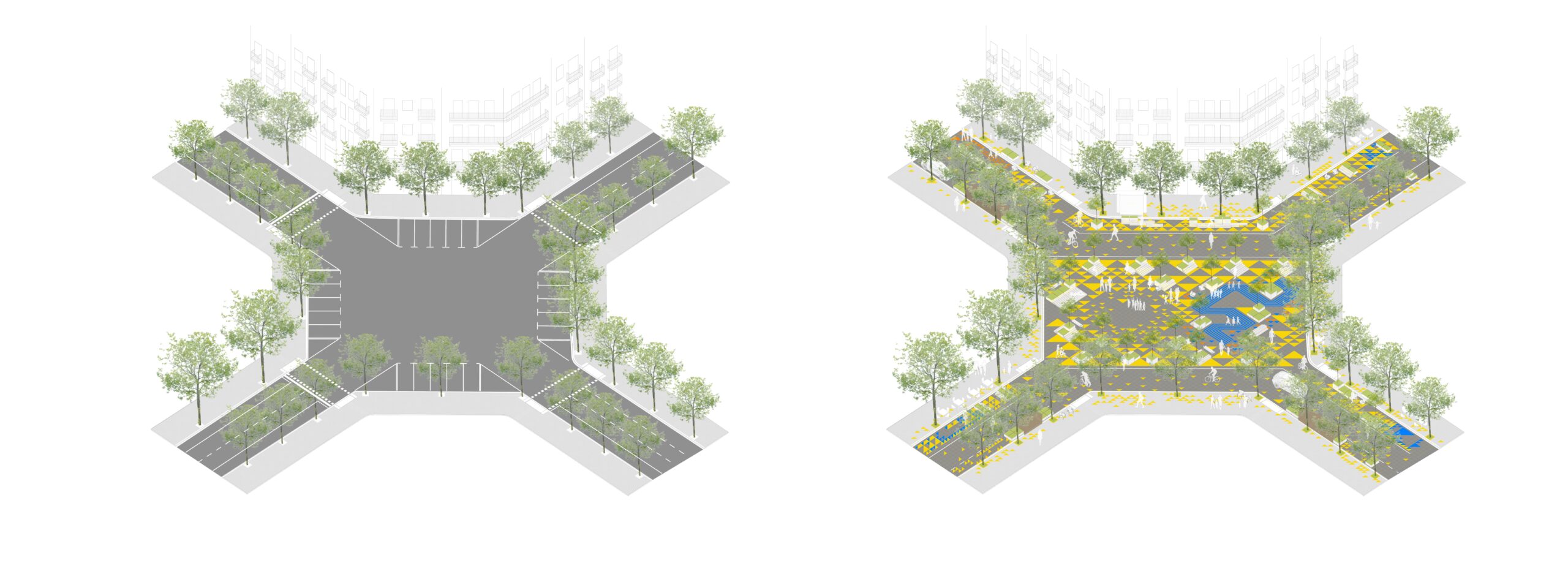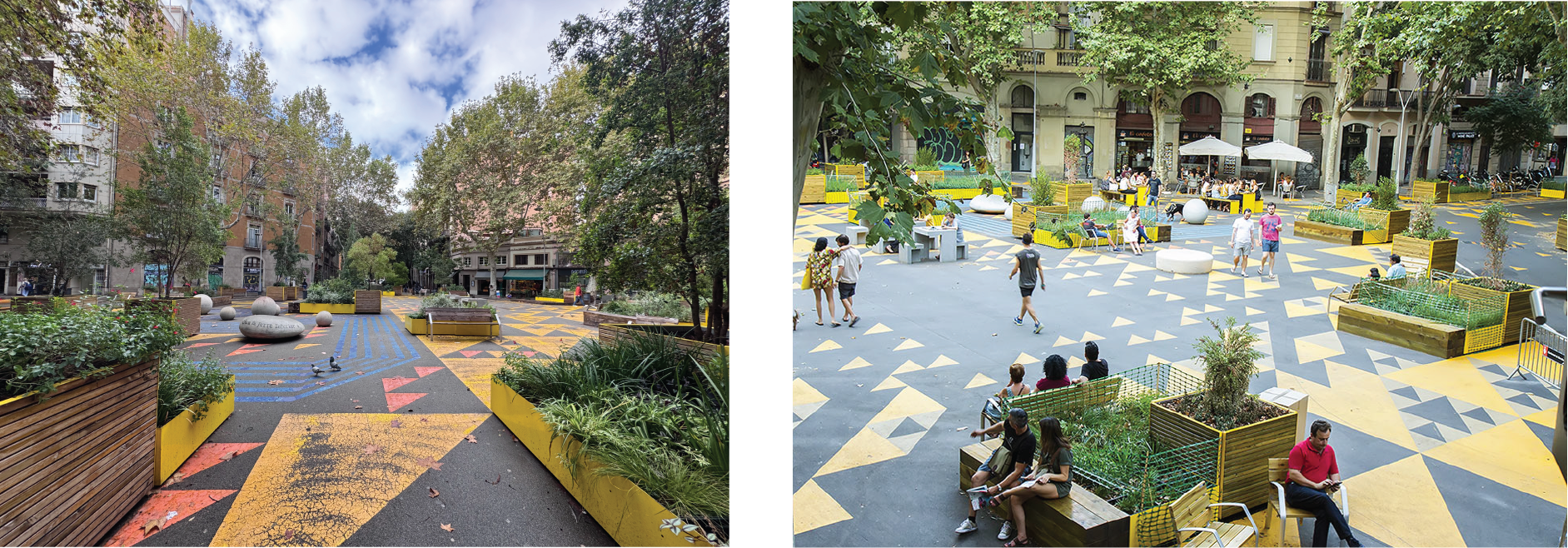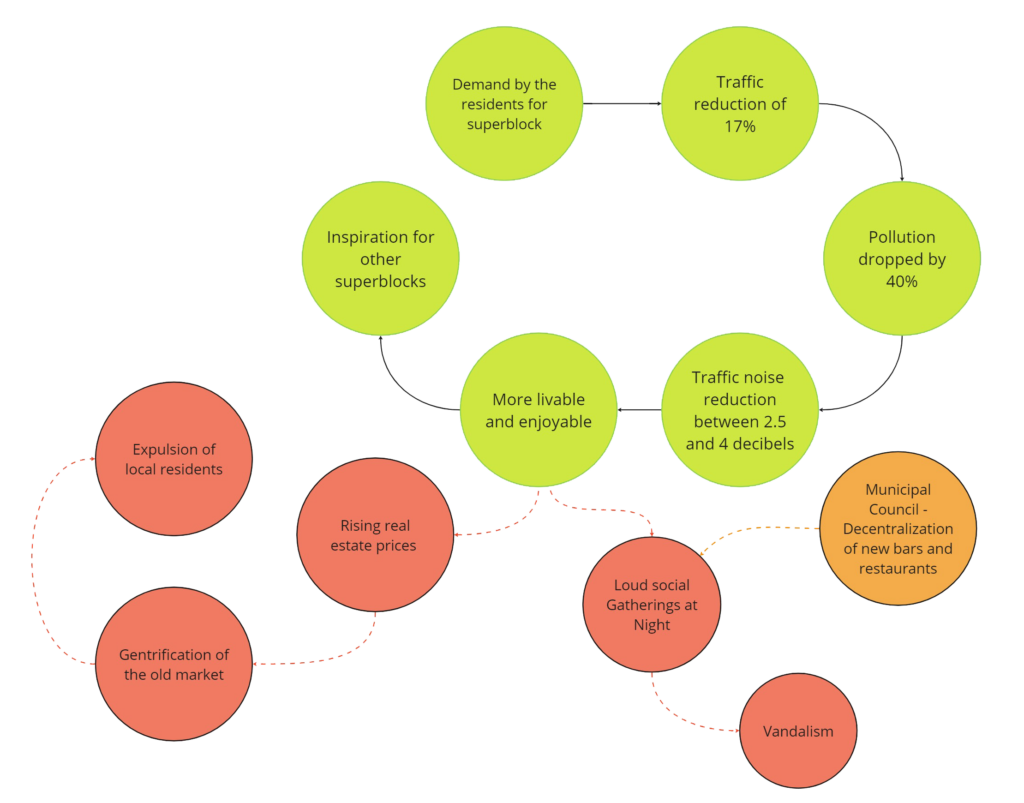Exploring the vibrant neighborhood of Sant Antoni, a lively corner of Barcelona’s Eixample district, we set out to uncover its rich history, pinpoint its challenges, and evaluate relevant data.
Our journey began with online research, laying the groundwork for our field observations. Once we arrived on-site, we captured the essence of the area through photographs, engaged in conversations with residents, and gathered their insights. We then returned to the classroom to synthesize our findings and deepen our understanding of this dynamic community.
Context: Understanding the Site
Nestled between El Raval, El Poble Sec, La Nova Esquerra de L’Eixample, and La Antigua Esquerra de L’Eixample, this area boasts excellent connectivity to the city center, with easy access to both Plaça Espanya and Plaça Catalunya via metro and bus routes. Renowned for its lively bars and restaurants, it has remained a relatively safe place to live.
At the heart of this neighborhood lies the historic Market, which first opened its doors in 1882. This bustling space features a food market, a clothing market, and a Sunday book market on its periphery. Following extensive renovations from 2009 to 2018 aimed at revitalizing the market, a temporary market was established on Ronda de Sant Antoni during the renovations.
Mistral Avenue, which became the neighborhood’s first pedestrian-only avenue in 1995, exemplifies the area’s commitment to enhancing urban living. More recent urbanization initiatives include the Superilla project, conceived for Sant Antoni in 2018 and completed in 2019, as well as the ongoing 16-month renovation of La Ronda.

News: What is the Media saying about Sant Antoni?

Site Visit: First hand observations

Superilla site plan: https://landscape.coac.net/superilla-sant-antoni
During our visit, we encountered some of the challenges reported in the news. We observed the lack of greenery at the Ronda construction site, although this is a temporary situation; once completed, the area will include more trees and greenery. We also came across remnants of a robbery, with a shop window smashed along the road.
We spoke with a local resident who has lived in the area for 12 years. He expressed his love for the superblock but mentioned that the increased nightlife noise can be quite disturbing. He appreciates the new market model, which offers relaxed gastronomic spaces. While he hasn’t been personally affected by changes over the years, he did note that property values have been rising significantly.

Superilla site visit, https://constraula.com/es/proyecto/reurbanizacion-para-la-creacion-de-una-superilla-en-el-barrio-sant-antoni-en-el-distrito-de-leixample-de-barcelona/

Indication of robbery, Tree removal on La Ronda, Construction on La Ronda, Mercat interior
Loops: Balancing forces

The Sant Antoni Superblock and the modernization of the Mercat de Sant Antoni have long been advocated by local residents. The Superblock has led to a significant reduction in traffic, averaging 17%, with a remarkable 83% decrease on C/ Comte Borrell. This decline in traffic has contributed to a 40% drop in pollution levels at the junction of Comte Borrell and Tamarit, as well as a reduction in noise pollution by 2.5 to 4 decibels. As a result, the area has become more livable and enjoyable, offering more outdoor spaces for activities like dog walking and socializing. Sant Antoni is the model for other revitalization projects taking place throughout the city. The Superblock implementation in Sant Antonin has triggered a positive feedback loop.
However, this transformation has not come without drawbacks. The revitalization has led to a sharp increase in real estate prices, which has raised concerns about gentrification. Many traditional market vendors have found it difficult to sustain their businesses due to rising rents, while some long-time residents have been displaced as property values climb. Additionally, despite the improvements, residents have reported increased noise levels during rest hours, potentially disrupting their quality of life. These changes make up the negative feedback loop. To balance these challenges, the Municipal Council has introduced building regulations aimed at better managing public participation activities across the district, with a focus on decentralizing the concentration of activities in the Eixample area.
Average price in Euros per square meter for properties sold from the years 2012-2024. Sant Antoni prices appears consistent in larger context of Barcelona while having a 64% increase in those 12 years. The map indicates a larger city-wide issue, not localized to Sant Antoni.
Data source: https://portaldades.ajuntament.barcelona.cat/en/statistics/bxtvnxvukh?view=table

Density of restaurants in Eixample (left) and Sant Antoni (right). The two scales indicate that Sant Antoni may experience less crowds due to restaurants than neighboring areas indicating that the Municipal Council plans to decentralize restaurant activity may not have a large effect.


